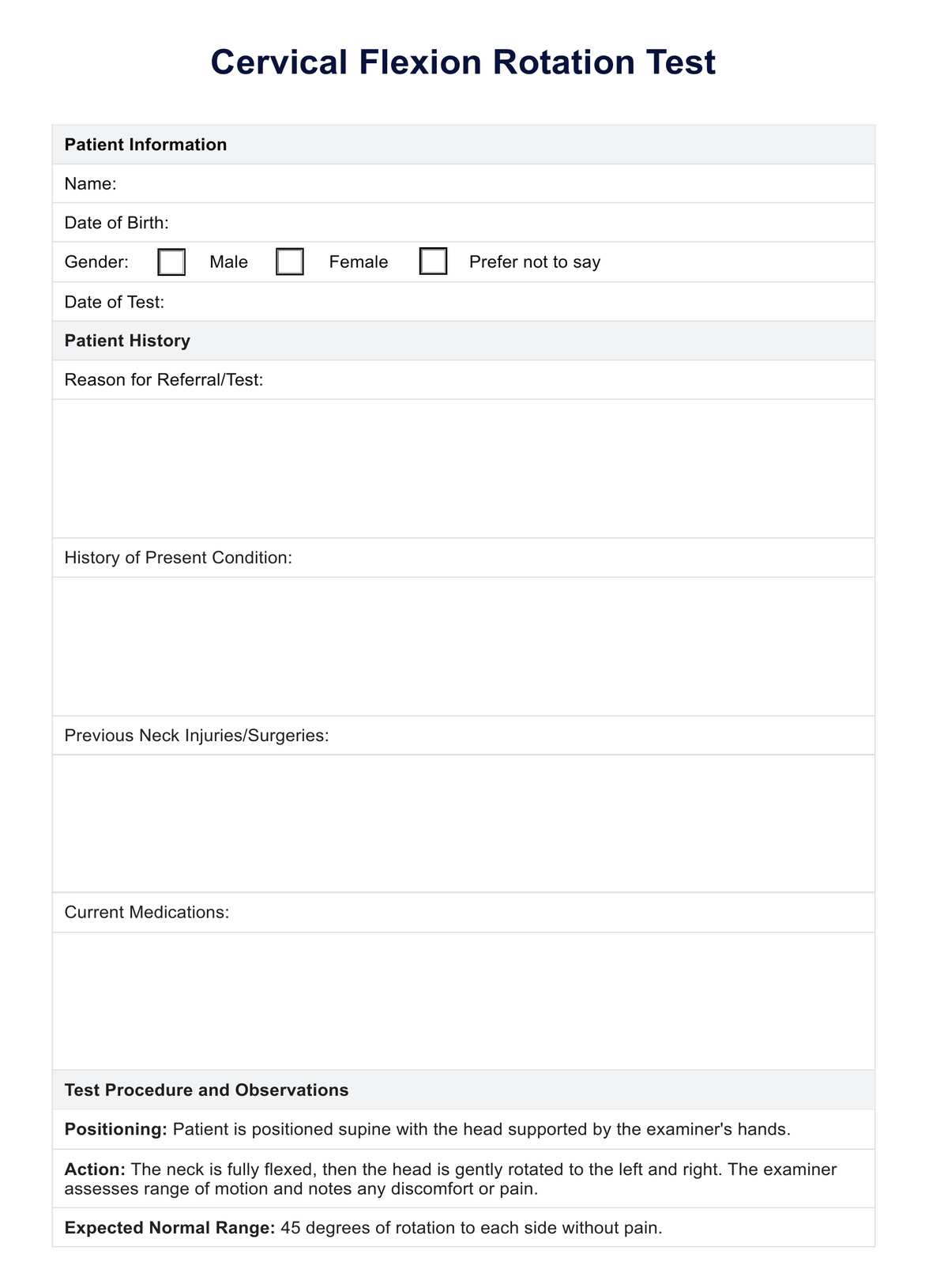To check cervical rotation, a practitioner typically has the patient sit or lie down, stabilize their torso to prevent shoulder movement, and then measure how much cervical rotation ROM or how far the patient can turn their head to each side.

Cervical Flexion Rotation Test
Discover the Cervical Flexion Rotation Test for assessing upper cervical spine dysfunction, ideal for diagnosing cervicogenic headaches and neck issues.
Cervical Flexion Rotation Test Template
Commonly asked questions
The Cervical Flexion Rotation Test is considered reliable for identifying cervicogenic headaches, with high intertester reliability and good specificity reported in clinical studies.
It is very reliable. According to Hall et al. in 2010, the FRT has an inter-rater reliability of 0.95-0.97 and a minimal detectable change of seven degrees. Ogince et al. reported in 2007 that it has a sensitivity of 91% and a specificity of 90% in diagnosing cervicogenic headaches.
EHR and practice management software
Get started for free
*No credit card required
Free
$0/usd
Unlimited clients
Telehealth
1GB of storage
Client portal text
Automated billing and online payments











